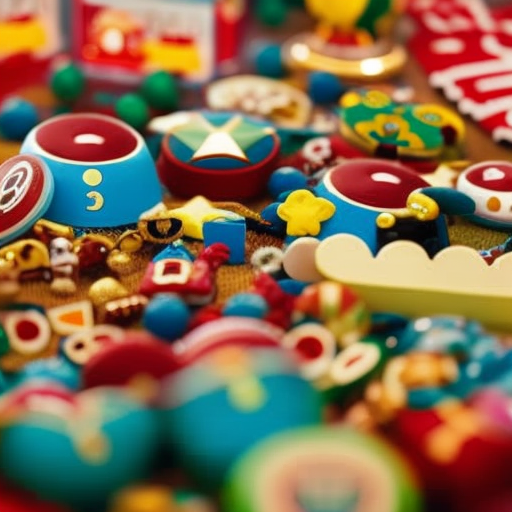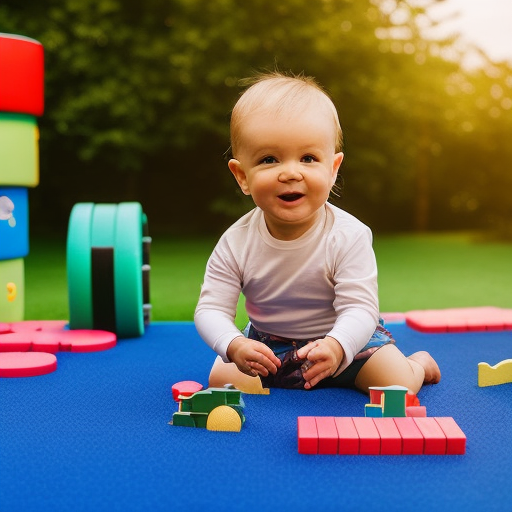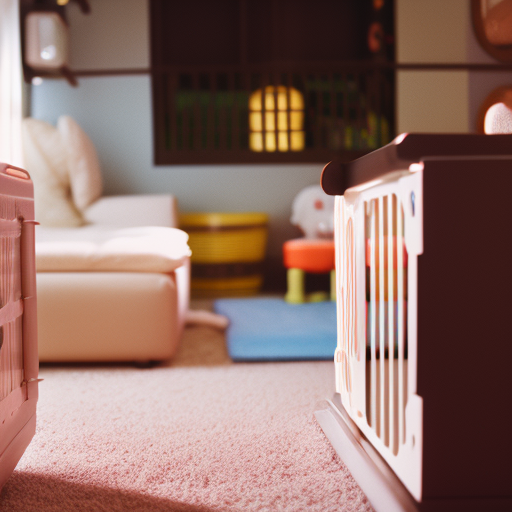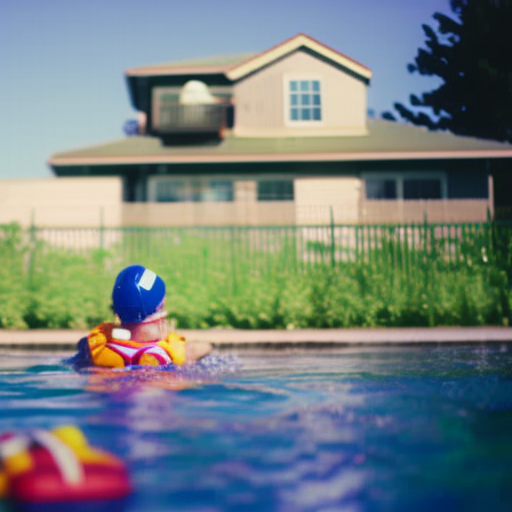"Cherishing Little Steps - A Haven for Baby and Family Journeys"
Safe Play for Babies and Toddlers
Are you ready to embark on a journey of ensuring the safety of your little ones during playtime? Play is an essential part of a child’s development, but it’s important to remember that their safety should always be a top priority.
In this discussion, we will explore various strategies and precautions to create a secure play environment for babies and toddlers. So, let’s dive in and discover the essential steps you can take to keep your little explorers safe and sound.
Key Takeaways
- Prioritize toy durability and choose toys made from high-quality materials
- Create a secure play area and supervise playtime
- Childproof the play space to prevent choking hazards
- Practice water safety and always supervise the child around water
Toy Safety

To ensure the safety of your little one during playtime, it’s crucial to prioritize toy safety. When choosing toys for your baby or toddler, it’s important to consider both toy durability and toy hygiene.
Firstly, toy durability is an essential aspect to consider. Babies and toddlers are curious and love exploring their surroundings, often putting toys in their mouths or throwing them around. Therefore, it’s important to choose toys that are sturdy and can withstand rough play. Look for toys made from high-quality materials that are resistant to breaking or chipping. Avoid toys with small parts that could potentially become choking hazards.
In addition to toy durability, toy hygiene is equally important. Babies and toddlers have developing immune systems, making them more susceptible to germs and infections. Regularly clean and sanitize toys to minimize the risk of spreading bacteria. Follow the manufacturer’s instructions for cleaning each toy, and consider using non-toxic cleaning agents. Pay special attention to toys that are frequently shared or come into contact with bodily fluids.
Age-Appropriate Play

Now let’s focus on ensuring that your little one engages in age-appropriate play to further enhance their development and enjoyment. Age-appropriate play is crucial for your child’s sensory development and cognitive stimulation. Here are three key factors to consider when choosing activities for your little one:
-
Sensory Development: Engage your child’s senses through play. Provide toys and activities that stimulate their senses of sight, touch, hearing, and smell. For infants, soft toys with different textures or musical mobiles can be beneficial. Toddlers can explore sensory bins filled with materials such as rice or sand, or enjoy finger painting with non-toxic, washable paints.
-
Cognitive Stimulation: Choose activities that promote cognitive development. For babies, simple games like peek-a-boo or stacking blocks can help them learn cause and effect. Toddlers can benefit from shape sorters, puzzles, or pretend play with dolls or toy kitchen sets, which encourage problem-solving skills and imaginative thinking.
-
Developmental Milestones: Keep in mind your child’s developmental milestones when selecting toys and activities. Each stage of development comes with different needs and abilities. For example, newborns benefit from toys that encourage visual tracking, while older babies may enjoy toys that promote crawling or walking.
Creating a Secure Play Area

Ensure a safe play area for your baby or toddler by implementing these essential tips.
First and foremost, consider installing baby gates to create a secure boundary. These gates can be easily installed at staircases or doorways, preventing your little one from accessing hazardous areas. Make sure to choose gates that are sturdy and have a secure locking mechanism.
Next, carefully select indoor play equipment that’s age-appropriate and meets safety standards. Look for toys and play equipment that are durable, free from small parts that could pose a choking hazard, and without any sharp edges. Regularly inspect the equipment for any signs of wear and tear, and promptly replace or repair any damaged parts.
Additionally, ensure that the play area is free from potential hazards. Remove any small objects, cords, or electrical outlets that could be within your child’s reach. Soften any sharp corners or edges by using corner guards or padding. Keep the play area clean and tidy, regularly removing any clutter or debris.
Supervising Playtime

To ensure the safety of your baby or toddler during playtime, it’s crucial to actively supervise their activities at all times. Here are three key ways to do so effectively:
-
Set boundaries: Establish clear limits and rules for playtime. This helps your child understand what’s safe and appropriate, preventing accidents or injuries. For example, designate specific areas where your child can play, and teach them not to wander off or touch dangerous objects.
-
Stay within arm’s reach: While it’s important to promote your child’s independence, it’s equally important to be close by to provide immediate assistance if needed. By staying within arm’s reach, you can quickly respond to any potential hazards or emergencies. This also allows you to guide your child’s play and offer encouragement and support.
-
Be actively engaged: Actively participating in your child’s playtime not only strengthens your bond but also enables you to closely monitor their activities. Engage in interactive play, ask open-ended questions, and provide guidance when necessary. This involvement helps you identify any potential risks and redirect your child’s attention to safer options.
Avoiding Choking Hazards

Minimize the risk of choking incidents by being aware of potential hazards and removing small objects from your baby or toddler’s play area. Preventing accidents is crucial when it comes to the safety of your little one. Babies and toddlers have a natural tendency to explore their surroundings with their mouths, making them particularly susceptible to choking hazards. To ensure their safety, it’s important to remove any small objects that could potentially be swallowed or lodged in their throat.
First aid for choking is a vital skill for parents and caregivers to learn. In the event of a choking incident, it’s important to act quickly and confidently. If your baby or toddler is coughing forcefully or having difficulty breathing, encourage them to keep coughing to dislodge the object. If the object remains stuck, perform the Heimlich maneuver for infants or toddlers, which involves giving a series of gentle back blows or abdominal thrusts.
Childproofing the Play Space

To further protect your baby or toddler from potential hazards, take the necessary steps to childproof their play space. Creating a safe environment will give you peace of mind and allow your little one to explore and play without constant worry. Here are three essential steps to childproofing their play space:
-
Install baby gates: Place baby gates at the top and bottom of stairs and any other areas that pose a risk of falling or injury. Make sure the gates are secure and properly installed to prevent your child from accessing dangerous areas.
-
Anchor furniture: Secure heavy furniture, such as bookshelves and dressers, to the wall to prevent tipping. Children love to climb and pull on objects, and unanchored furniture can easily topple over, causing serious injuries.
-
Eliminate small objects: Remove any small toys, coins, or other choking hazards from the play area. Babies and toddlers have a tendency to put everything in their mouths, so it’s crucial to keep small objects out of their reach.
Childproofing the play space is a crucial step in keeping your baby or toddler safe. By following these steps, you can create a secure environment where your little one can explore and play without unnecessary risks.
Water Safety

Ensure the safety of your baby or toddler around water by implementing these essential water safety measures.
First and foremost, consider enrolling your child in swimming lessons. Teaching them basic water skills and safety techniques can greatly reduce the risk of accidents. Look for certified instructors who specialize in teaching young children.
Additionally, installing a pool fence is crucial in preventing unsupervised access to the water. Make sure the fence is at least four feet high and has a self-locking gate. Regularly check the fence for any signs of damage or wear.
It’s also important to constantly supervise your child when they’re near any body of water, even if they know how to swim. Remember, accidents can happen quickly and silently. Consider designating a Water Watcher, an adult solely responsible for watching the children in and around the water. Avoid distractions like phones or conversations and stay within arm’s reach of your child.
Outdoor Play Precautions

Keep your baby or toddler safe during outdoor play by following these essential precautions.
-
Sun protection: Protect your child from harmful UV rays by applying sunscreen with a high SPF and reapplying every two hours. Dress your little one in lightweight, breathable clothing that covers their skin and don’t forget a wide-brimmed hat and sunglasses.
-
Outdoor play equipment: Ensure that the play area is free from hazards such as sharp edges, loose parts, or protruding screws. Regularly inspect the equipment for any signs of wear and tear, and make sure it’s securely anchored to the ground. Always supervise your child while they’re using the equipment to prevent accidents.
-
Stay hydrated: Keep your child hydrated during outdoor play by offering them water at regular intervals. Encourage them to take breaks and rest in the shade to prevent overheating.
Importance of Regular Safety Inspections
Regular safety inspections are essential to ensure the well-being of your child during outdoor play. By conducting regular maintenance checks, you can identify and address potential hazards, ensuring your child’s safety and peace of mind. These inspections should be performed on a regular basis to ensure that your outdoor play area meets safety standards and remains a secure environment for your little one.
During these inspections, pay close attention to any signs of wear and tear on equipment, such as swings, slides, and climbing structures. Check for loose screws, broken parts, or sharp edges that could cause injury. Additionally, inspect the ground surface for any potential tripping hazards, such as uneven surfaces or loose gravel.
Regular safety inspections also provide an opportunity to evaluate the overall safety of your outdoor play area. Are there any obstacles that could pose a danger to your child? Are there any potential entrapment hazards that need to be addressed? By addressing these concerns through regular inspections, you can ensure that your child’s play area meets the highest safety standards.
Frequently Asked Questions
How Do I Choose Safe and Non-Toxic Toys for My Baby or Toddler?
You can choose safe and non-toxic toys for your baby or toddler by considering eco-friendly options. It’s important to prioritize sensory play, as it helps with their development and learning.
What Are Some Age-Appropriate Play Activities for My Baby or Toddler?
You’ll love watching your little one engage in sensory exploration. From feeling different textures to listening to nature sounds, it’s a wonderful way to stimulate their development. Outdoor play also offers endless opportunities for adventure and discovery.
How Can I Create a Secure Play Area in My Home?
To create a secure play area in your home, start by baby proofing your space. Secure furniture, cover electrical outlets, and install safety gates. Consider essential safety measures like padding sharp corners and providing age-appropriate toys.
What Are Some Tips for Effectively Supervising Playtime With My Baby or Toddler?
To effectively supervise playtime with your baby or toddler, it’s crucial to prioritize their communication development and the importance of outdoor play. Keep a close eye on them, engage in interactive play, and create a safe and stimulating environment.
How Can I Prevent Choking Hazards in My Baby or Toddler’s Play Space?
To prevent choking hazards in your baby or toddler’s play space, it’s crucial to baby proof the area. Be aware of common household items that pose risks, like small toys, coins, and food. Stay vigilant and keep your little one safe.
Conclusion
In the world of play, safety is the guardian angel watching over our little ones. Just as a fortress protects its treasures, we must create secure play areas, choose age-appropriate toys, and supervise playtime diligently.
Like a river flowing gently, we must ensure water safety, and like a seasoned explorer, we must take precautions during outdoor play.
Remember, regular safety inspections are the key to maintaining a sanctuary of joy for our precious babies and toddlers.



I rarely read blog posts, but this one compelled me to. Your writing style is amazing. Thanks for a great post.
Получи бесплатную консультацию юриста по телефону в подарок!
Получите ответы на все вопросы по телефону с опытным юристом бесплатно!
Расскажите о своей ситуации и получи бесплатную консультацию юриста по телефону!
Что делать дальше? Получите бесплатную консультацию по телефону прямо сейчас!
Закажите бесплатную консультацию юриста по телефону без усилий!
Нужен профессиональный совет? Получите бесплатную консультацию юриста по телефону без ожидания!
Легко и быстро получите бесплатную консультацию юриста по телефону!
Непонятная ситуация? Получите бесплатную консультацию юриста по телефону прямо сейчас!
Нужна юридическая помощь? и получите бесплатную консультацию прямо сейчас!
Нужен совет юриста? Получите бесплатную консультацию юриста по телефону без ожидания!
Непонятная юридическая ситуация? Получите бесплатную консультацию юриста по телефону и решите свои проблемы сразу!
Решите свои юридические проблемы быстро и бесплатно с помощью нашей консультации по телефону!
Хотите сэкономить на юридических услугах? Получите бесплатную консультацию юриста по телефону и решите свои проблемы!
Хотите сэкономить на юридических услугах? Получите бесплатную консультацию юриста по телефону и решите свои вопросы!
Хотите получить профессиональную консультацию бесплатно? Получите бесплатную консультацию юриста по телефону и решите свои проблемы сразу!
Получите близкого ответа на свои вопросы Получите бесплатную консультацию юриста по телефону и услышите правильный ответ сразу!
Нужна бесплатная консультация юриста? Получите бесплатную консультацию по телефону и решите свои проблемы сейчас!
Сорвите бесплатную консультацию юриста по телефону Получите бесплатную консультацию юриста по телефону и узнайте ответы на все свои вопросы прямо сейчас!
Сорвите консультацию юриста бесплатно и разберитесь с помощью нашей консультации по телефону!
Получите бесплатную консультацию со своего домашнего телефона прямо сейчас!
телефон консультации юриста бесплатно без регистрации [url=http://yurist-konsultaciya-moskva1.ru/]http://yurist-konsultaciya-moskva1.ru/[/url].
I liked it as much as you did. Even though the picture and writing are good, you’re looking forward to what comes next. If you defend this walk, it will be pretty much the same every time.
Your article helped me a lot, is there any more related content? Thanks!